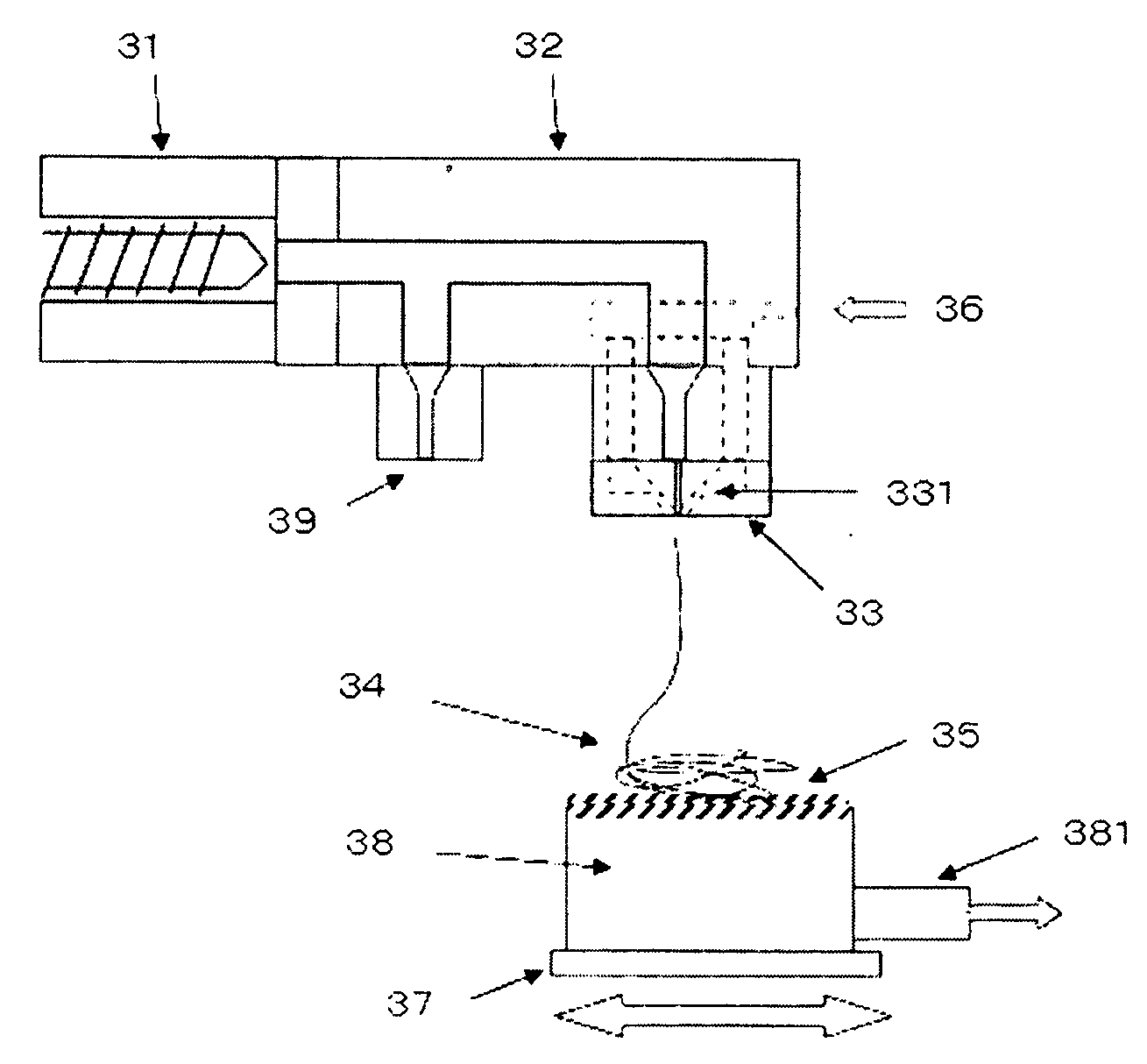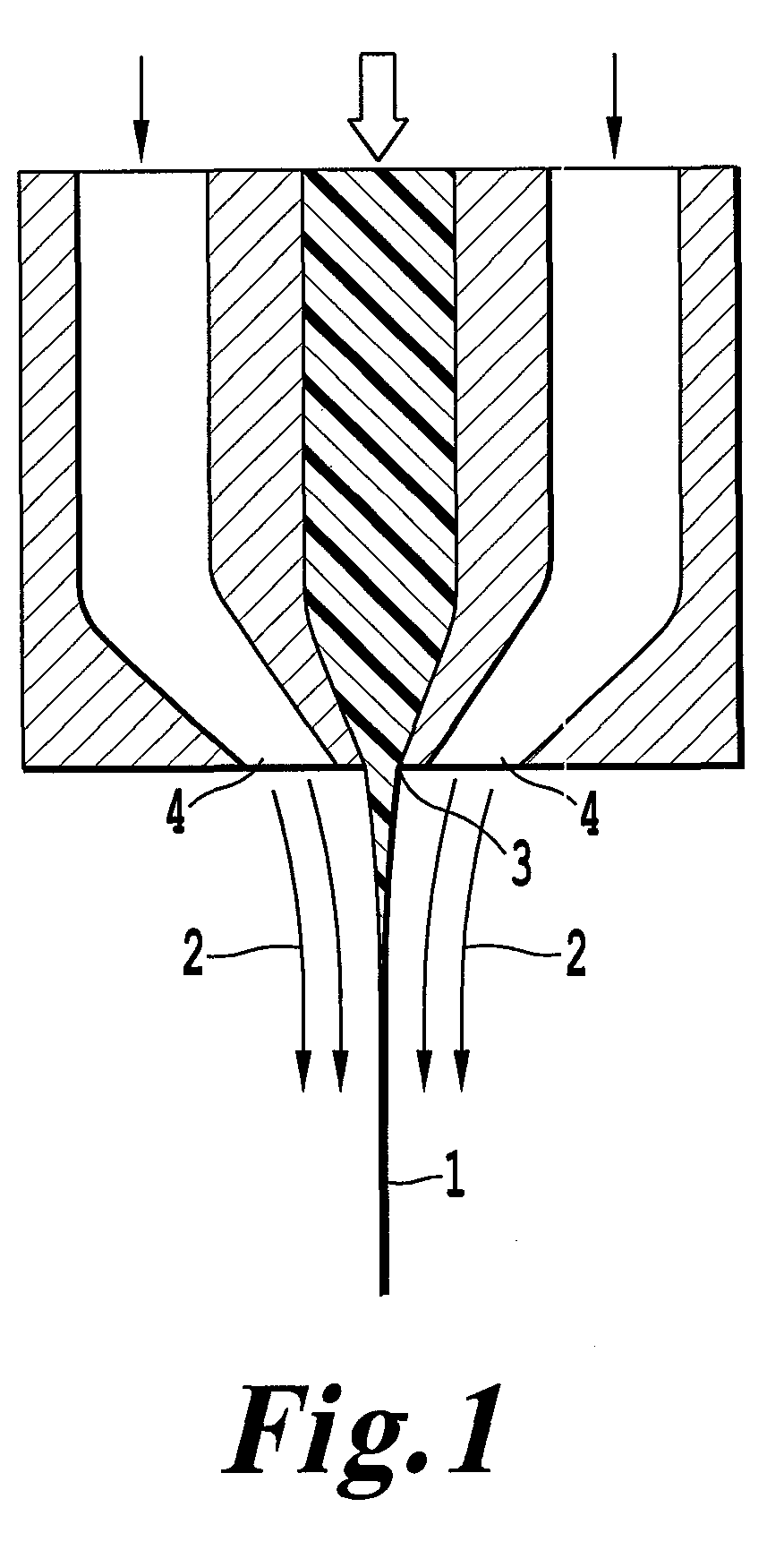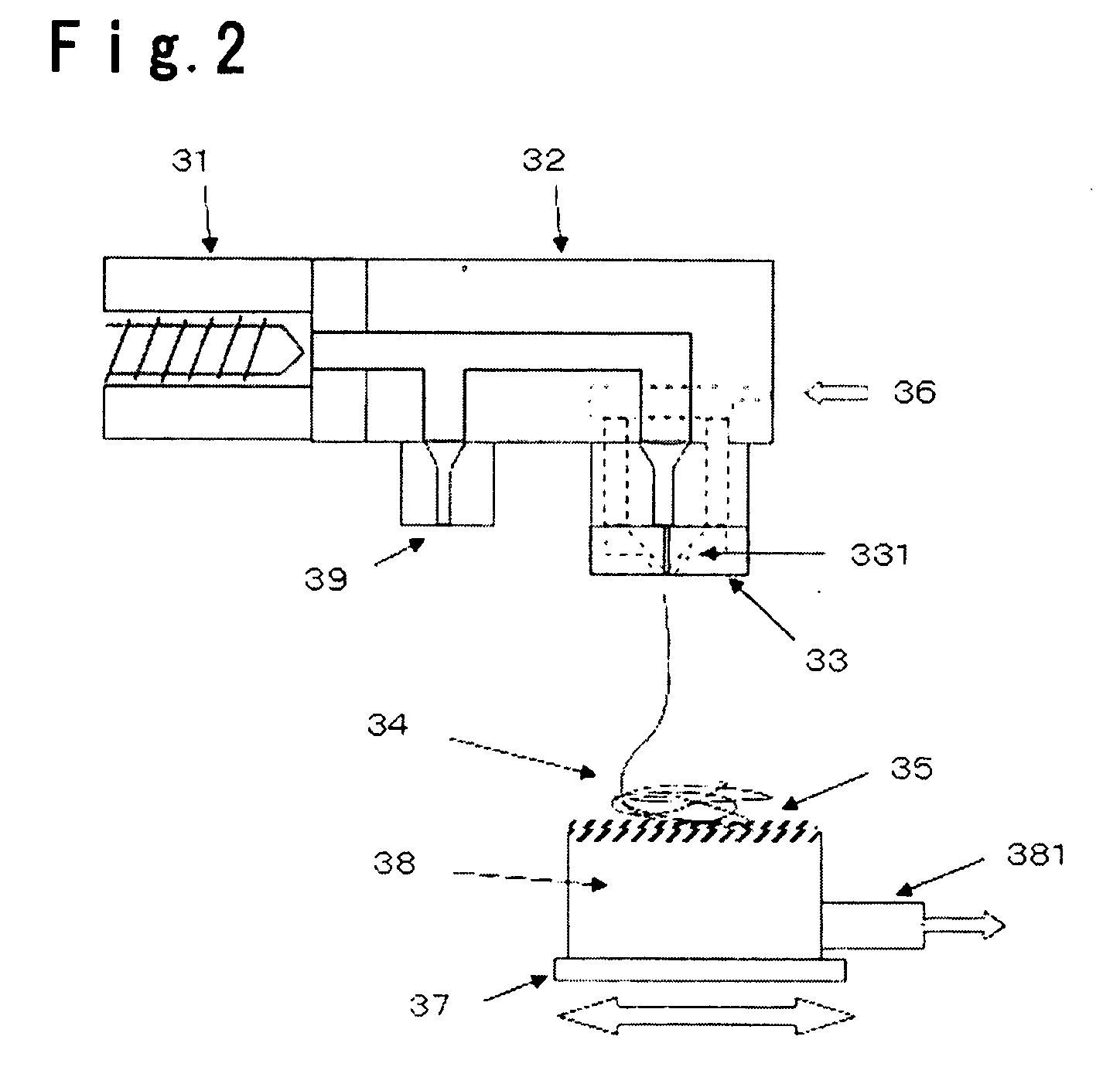Electrolyte membrane for polymer electrolyte fuel cells, process for its production and membrane-electrode assembly for polymer electrolyte fuel cells
a technology of electrolyte fuel cells and electrolyte membranes, which is applied in the field of electrolyte membranes for process for its production and membrane electrolyte assembly of polymer electrolyte fuel cells, can solve the problems of reduced durability of fuel cells, mechanical strength of membranes tend to decrease, and low power generation performance, and achieve high proton conductivity , good dimensional stability, high power generation performan
- Summary
- Abstract
- Description
- Claims
- Application Information
AI Technical Summary
Benefits of technology
Problems solved by technology
Method used
Image
Examples
example 1
Preparation Example 1
[0120](1) A polymerization tank having an internal capacity of 94 L and equipped with a stirrer, was deaerated and charged with 87.3 kg of 1,3-dichloro-1,1,2,2,3-pentafluoropropane (AK225cb, hereinafter referred to as “AK225cb”, manufactured by Asahi Glass Company, Limited) and 860 g of CH2═CH(CF2)4F. With stirring, the interior of the polymerization tank was heated to 66° C., and a mixed gas of TFE / E=89 / 11 (molar ratio) was introduced until the pressure in the polymerization tank became 1.4 MpaG. As a polymerization initiator, 667 g of a 1 mass % AK225cb solution of tert-butyl peroxypivalate was charged to initiate the polymerization.
[0121]A mixed gas having a composition of TFE / E=60 / 40 (molar ratio) and CH2═CH(CF2)4F in a ratio corresponding to 3.3 mol % to the mixed gas, were continuously charged so that the pressure became constant during the polymerization. Upon expiration of 8 hours after the initiation of the polymerization, when 7.1 kg of the monomer mix...
example 2
Preparation Example 2
[0136](1) Into a 430 L evacuated stainless steel autoclave, 164.8 kg of CF3(CF2)5H, 168.0 kg of AK-225cb, 337 kg of CH2═CH(CF2)4F and 89 kg of deionized water were charged, and the interior of the polymerization tank was heated to 65° C. with stirring, whereupon a mixed gas of TFE / E=89 / 11 (molar ratio) was introduced to 1.4 MPaG, and 40.1 g of a solution obtained by diluting an AK225cb solution of 50 mass % of tert-butyl peroxypivalate with CH2═CH(CF2)4F until tert-butyl peroxypivalate became 1 wt %, was charged to initiate the polymerization.
[0137]During the polymerization, a mixed gas of TFE / E=59 / 41 (molar ratio) and CH2═CH(CF2)4F in an amount corresponding to 3.3 mol % to the above mixed gas, were continuously added so that the pressure became 1.4 MPaG, and after charging 30 kg of a tetrafluoroethylene / ethylene mixed gas, the autoclave was cooled, and the residual gas was purged to complete the polymerization. The time required for the polymerization was 420 ...
PUM
| Property | Measurement | Unit |
|---|---|---|
| melting point | aaaaa | aaaaa |
| diameter | aaaaa | aaaaa |
| thickness | aaaaa | aaaaa |
Abstract
Description
Claims
Application Information
 Login to View More
Login to View More - R&D
- Intellectual Property
- Life Sciences
- Materials
- Tech Scout
- Unparalleled Data Quality
- Higher Quality Content
- 60% Fewer Hallucinations
Browse by: Latest US Patents, China's latest patents, Technical Efficacy Thesaurus, Application Domain, Technology Topic, Popular Technical Reports.
© 2025 PatSnap. All rights reserved.Legal|Privacy policy|Modern Slavery Act Transparency Statement|Sitemap|About US| Contact US: help@patsnap.com



